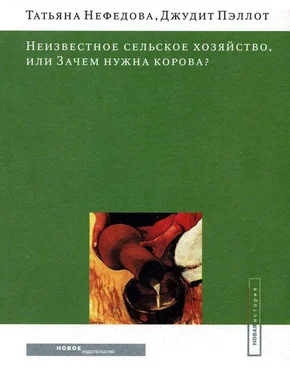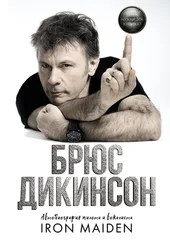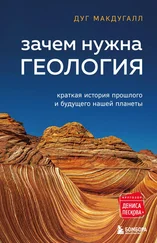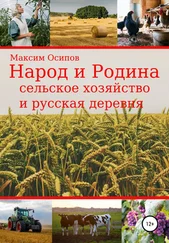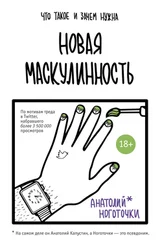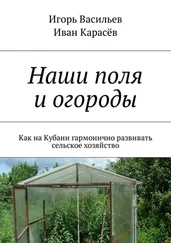Татьяна Нефедова - Неизвестное сельское хозяйство, или Зачем нужна корова?
Здесь есть возможность читать онлайн «Татьяна Нефедова - Неизвестное сельское хозяйство, или Зачем нужна корова?» — ознакомительный отрывок электронной книги совершенно бесплатно, а после прочтения отрывка купить полную версию. В некоторых случаях можно слушать аудио, скачать через торрент в формате fb2 и присутствует краткое содержание. Жанр: industries, на русском языке. Описание произведения, (предисловие) а так же отзывы посетителей доступны на портале библиотеки ЛибКат.
- Название:Неизвестное сельское хозяйство, или Зачем нужна корова?
- Автор:
- Жанр:
- Год:неизвестен
- ISBN:нет данных
- Рейтинг книги:3 / 5. Голосов: 1
-
Избранное:Добавить в избранное
- Отзывы:
-
Ваша оценка:
- 60
- 1
- 2
- 3
- 4
- 5
Неизвестное сельское хозяйство, или Зачем нужна корова?: краткое содержание, описание и аннотация
Предлагаем к чтению аннотацию, описание, краткое содержание или предисловие (зависит от того, что написал сам автор книги «Неизвестное сельское хозяйство, или Зачем нужна корова?»). Если вы не нашли необходимую информацию о книге — напишите в комментариях, мы постараемся отыскать её.
Неизвестное сельское хозяйство, или Зачем нужна корова? — читать онлайн ознакомительный отрывок
Ниже представлен текст книги, разбитый по страницам. Система сохранения места последней прочитанной страницы, позволяет с удобством читать онлайн бесплатно книгу «Неизвестное сельское хозяйство, или Зачем нужна корова?», без необходимости каждый раз заново искать на чём Вы остановились. Поставьте закладку, и сможете в любой момент перейти на страницу, на которой закончили чтение.
Интервал:
Закладка:
214 5.3 The shoots of private entrepreneurship
219 5.4 Urban dwellers’agriculture
231 5.5 The variability of private farming in Russia
235 5.6 Small-scale farming and land conflicts
Chapter 6. Socio-economic changes in rural Russia
246 6.1 Problems in privatefarming in Russia
256 6.2 The informal economy and the self-organisation of farming in rural districts 266 6.3 Changes in the socio-economic structure of rural society
274 6–4 The private sector informer and existing socialist countries:
East-Central Europe – Russia – China
285 6.5 Social and economic policy in rural Russia
296 Conclusion. What next?
305 References
317 Summary
Summary
The book «Russia’s unknown agriculture or The need to own a cow» is written by two geographers, Dr Tatyana Nefedova of the Russian Academy of Sciences and Dr Judith Pallot of Oxford University, UK. Its subject is a little studied aspect of Russian agriculture. Much is known about large and medium-scale agricultural enterprises – they are the subject of political debate at national and local level and statistics are collected relating to them. However, large and medium-scale farms are responsible for less than one half the value of agricultural produce in Russia. Private “peasant” farms about which there has been so much discussion among politicians and in the press are responsible for only 4 per cent. The majority of food in Russia is, in fact, produced by the people in their spare time, including all their days off and holidays, on small plots of land. Urban dwellers produce more than their rural counterparts. In order to illuminate this shadowy aspect of the agrarian economy, the authors visited many regions of Russia interviewing the producers themselves, the managers of large farms and local authority officials, and analysed the available published and unpublished data. The methodology they employed is discussed in the introductory chapter to the book. In this same chapter the authors give a detailed review of the history Russian private agriculture in the twentieth century, including of the phases and results of agrarian reforms of the 1990s. The chapter describes the current multifaceted structure of Russian agriculture and the role of “people’s farms” in the agrofood production system 1 and in the household economy of the producers.
The second chapter is devoted to specific examples of how “ordinary people” in Russia’s regions carry out farming on heir plots. The aim of the chapter, using both word pictures and photographs, is to demonstrate the rich variety of people’s farming (personal subsidiary farming) in different rural districts in regions with different physical-geographic conditions: the South (using the example of Stavropol krai and the Volga provinces), the North (1n the Pre-Urals and Archangel oblast), the suburbs and in Russia’s glubinka. The last section of the chapter describes places that, it turns out, can be found “anywhere” in Russia but not “everywhere”. These are special places where people’s farming has assumed a commercial and specialised character that place it on a par with other clusters of entrepreneurial activity in post-Soviet Russia.
The third chapter is devoted to the identification of the universal factors underpinning people’s farming. Principal among these is resources the following: social-demographic; land; capital, which takes the form of inputs from the large-farm sector; natural and non-agricultural-resources. In the chapter the authors discuss the importance of human capital to small-scale farming, how much land is used and how small is the demand for expanding land resources, the inter-dependence of small and large-scale farming and the practice of natural resource harvesting in Russia’s forests. The chapter concludes with a systematic analysis of the geography of the natural resource base of people’s farming, the limits imposed upon it by population and resources, and the influence on it of the current state of large farming.
The fourth chapter is more overtly geographical. Using maps, diagrams and tables, the authors show the variation by administrative region in the number of livestock kept on people’s farms, production of dairy products, meat, vegetables and potatoes. One section is devoted to the degree of commercialisation of production and it links to the market. The principal geographic factors determining the patterns observed are distance to the cities and physical geography. The chapter concludes with the discussion of the influence of ethnicity on the geography of people’s farms. Examples of ethnically specific people’s farms are described in Stavropol krai, the Volga provinces and the Pre-Urals, including in places where there is nascent ethnic conflict. The role of socio-demographic and economic factors in worsening ethnic relations latter cases is analysed.
The fifth chapter shifts to a discussion of private farming in general in post-Soviet Russia. The list of private farms includes both formal and informal forms, such as private “peasant” farms created under land reforms, “ga-sterbeiter-gangs” which rent land for vegetable production from large enterprises in the southern and eastern regions of European Russia, people’s farms producing for themselves or for the market, and, last but not least, urban dwellers allotments attached to their dachas or next to rural houses they have inherited from rural relatives or bought and in orchard and garden cooperatives. In the chapter the market involvement of these different land users is compared and a typology developed based on their degree of commercialisation. The latter produces a much finer division of Russia’s private food producers than is captured in the official categorizations. The final section of the chapter discusses the types of conflict that can arise at the present time over land used for people’s farming by referring to two places where this is already a major problem – the south of European Russia and in the environs of Moscow city.
Finally chapter six discusses socio-economic change in rural Russia.
It includes a detailed discussion of what motivates rural small producers and their current problems. It argues that people’s farms have occupied the niche reserved in land reforms for private family farms of the “western” type and discusses the reasons for this. The economic, bureaucratic and socio-psycho-logical barriers to the development of capitalist farms in Russia are discussed. Sections of the chapter also discuss the specifics of the informal economy and the process of self-organisation in Russian farming and its relationship at different scales. Cross-cultural comparisons are made with the countries of East-Central Europe and China. The chapter concludes with a speculative discussion of the possible direction of development of small-scale private farming in Russia and the policy implications.
The two Conclusions are written by the two authors separately. Judith Pallot, although very familiar with Russia having visited and studied the country for many years, nevertheless, articulates an outsider’s view of rural Russia. For Tatyana Nefedova, as a Moscow dweller, village is also a “different” world but hers is more of the insider’s view informed by twenty years of systematic study of rural Russia.
The book is aimed at readers who are interested in the problems of rural Russia and agriculture but it should be of interest to t wider audience of people interested in the social geographical, demographic and ethnic problems of contemporary Russia.
Примечания
1
При советской власти мы бесплатно, но вручную переписывали тома убогой статистики. Большая часть информации была засекречена не столько из соображений безопасности, сколько для того, чтобы скрыть от своего же населения провалы в экономике. Теперь в Москве и в регионах издается множество сборников, информацию можно получить в электронном виде, но… она стала очень дорогой. Или снова недоступной – уже в силу «коммерческой тайны».
Читать дальшеИнтервал:
Закладка:
Похожие книги на «Неизвестное сельское хозяйство, или Зачем нужна корова?»
Представляем Вашему вниманию похожие книги на «Неизвестное сельское хозяйство, или Зачем нужна корова?» списком для выбора. Мы отобрали схожую по названию и смыслу литературу в надежде предоставить читателям больше вариантов отыскать новые, интересные, ещё непрочитанные произведения.
Обсуждение, отзывы о книге «Неизвестное сельское хозяйство, или Зачем нужна корова?» и просто собственные мнения читателей. Оставьте ваши комментарии, напишите, что Вы думаете о произведении, его смысле или главных героях. Укажите что конкретно понравилось, а что нет, и почему Вы так считаете.
